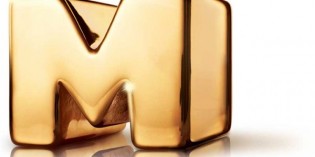Advertisers are paying more to appear in the Oscars than they have in some time–a signal that they hope the event, which will be hosted by an unorthodox celebrity, will have more power than it has been able to muster in recent years.
ABC, which has hosted the event for years, has been notching between $1.65 million and $1.8 million for a 30-second spot in this year’s Oscars broadcast, according to media buyers and others familiar with the tone of negotiations, up slightly from the $1.6 million to $1.7 million ABC secured for Oscars-telecast commercials in 2012. The network is verging on selling out its inventory, according to these people, and with ad time now scarce, it’s trying to see whether latecomers may pay as much as $2 million for a 30-second ad. Digital-ad sales for Oscars.com and ABC’s Oscars app are also proceeding briskly, these people said.
“We haven’t been this well sold, this early, in over a decade,” said Debbie Richman, senior VP-prime-time ad sales at ABC. “We were virtually sold out by Christmas, which speaks to the appeal of the Oscars.”
The pricing suggests that marketers are placing more value on the Oscars. In 2008, ads in the glitzy awards ceremony were going for around $1.82 million, but dropped in 2009 to around $1.3 million after the recession and ratings woes tamped down some of the telecast’s appeal. Ad prices rose to about $1.5 million in 2010 and then to between $1.6 million and $1.7 million in 2011 and 2012.
Live events such as the Super Bowl and the Grammys are proving to be one of the few “sure things” on broadcast TV when it comes to drawing a large, unified audience that is unable to zap past advertising. Last year’s Oscars broadcast, hosted by Billy Crystal, drew 39.3 million viewers, according to Nielsen, representing a 4% tick up from the 37.6 million people it drew in 2011, when James Franco and Anne Hathaway hosted in a turn that was derided by critics.
But the Academy Awards have faced challenges in recent years. Viewership for the Oscars telecast ebbs and flows depending on the popularity of the slate of films nominated in the Best Picture category. When the top movies nominated are artier films aimed at older audiences, viewership more often than not tumbles. And when the nominees for best films are blockbusters tailored for the masses, the ratings go up.
In 1997, for example, approximately 55 million viewers tuned in to see the crowd-pleasing “Titanic” win Best Picture. Yet in 2003, when “Chicago” won the honor, only 33 million watched. Oscar ratings hit a new low in 2008, when just 32 million tuned in to see “No Country For Old Men” win the big prize, down from about 38.9 million the year before.
The Academy has typically maintained a tight hold on ABC’s Oscars telecast. Only recently was the telecast opened to movie studios that might wish to advertise. Going forward, Christina Kounelias, chief marketing officer for The Academy of Motion Picture Arts and Sciences, said the Academy is more open to the idea of weaving sponsors into the program, especially the red-carpet pre-show.
“I’d like to think we’re more flexible,” she said regarding the prospect of ad messages integrated into the main event. While the Academy has to “be realistic about it” so as not to lengthen an already-long evening and not distract from the awards process, “we are open to working with people in a number of ways.”
Sponsors lined up for the 2013 Oscars broadcast include rivals Samsung and Apple, according to people familiar with the negotiations, suggesting the two trendy mobile-tablet makers are ready to use the show’s Hollywood backdrop as a front for their ongoing battle. Veteran Oscars supporters such as JC Penney and Hyundai are also likely to return.










